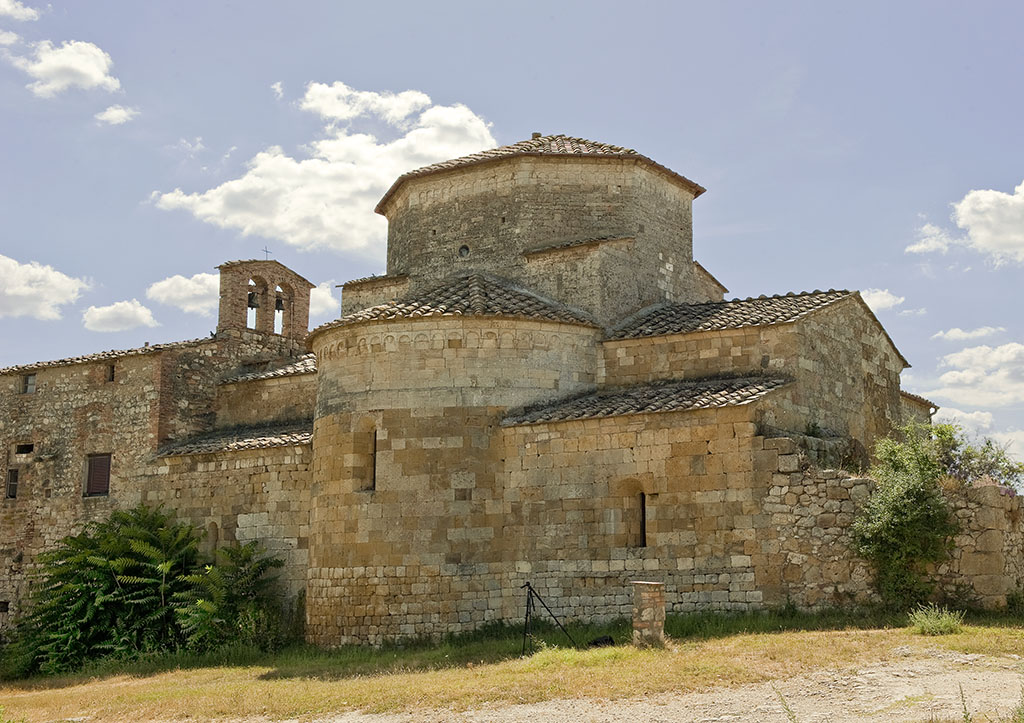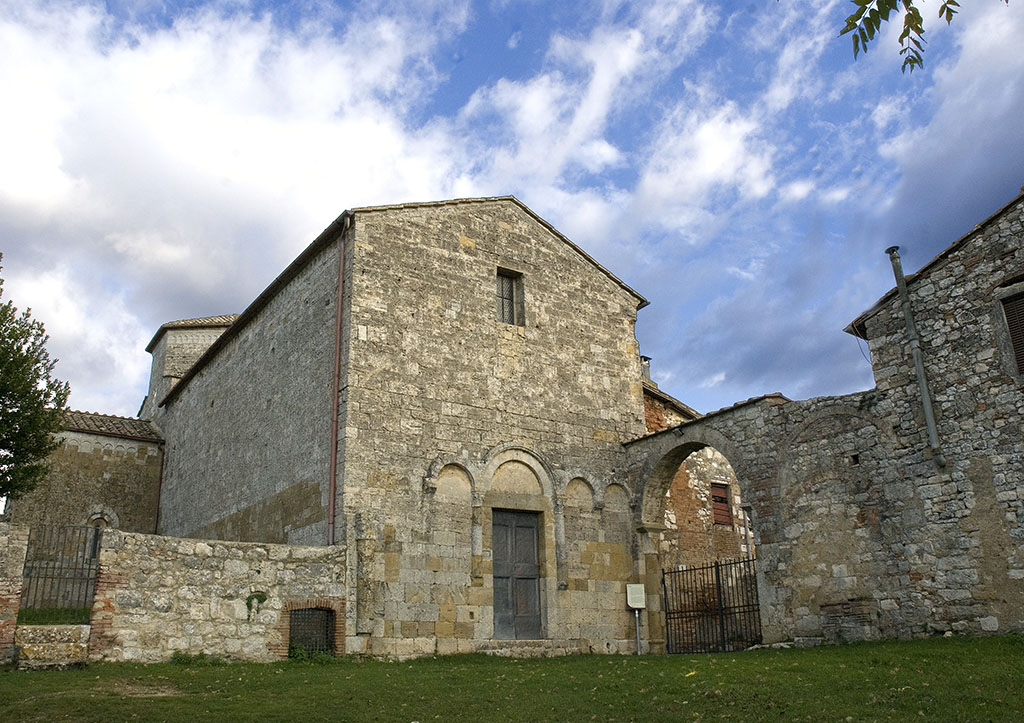Abbey of Santa Maria Assunta in Conèo (Badia a Coneo)
The Abbey of Santa Maria Assunta in Conèo, founded around the year 1000, stands at the crossroads of the Via Francigena and the Via Volterrana — two important medieval routes. Originally established as a Benedictine monastery, it became affiliated with the Vallombrosan Order between 1073 and 1076, adopting the architectural features typical of that order. The abbey church, built after the transition to the Vallombrosans, was consecrated in 1124 in the presence of distinguished bishops. It is a single-nave structure with a projecting transept and three apses: the central one, larger, flanked by two smaller lateral apses.


The façade features an arched portal decorated with rosettes, framed by a series of arcades with anthropomorphic and zoomorphic capitals. The upper section was altered during later restorations, which resulted in the loss of an original bifora surmounted by a bell gable. The only fully visible side is the northern one, adorned with three single-lancet windows and decorative arches featuring figures and vegetal motifs reminiscent of the Romanesque style of Volterra Cathedral. The exterior is crowned by an octagonal lantern tower topped with a pyramidal dome, embellished with hanging arches and vine-scrolls, and featuring a small oculus.
Inside, the church has a Latin cross layout, with a wooden truss roof over the nave and a presbytery divided into three distinct sections: two transept arms with barrel vaults and a central apse crowned by a ribbed dome. The capitals, carved with foliage, praying figures, and monks, reflect the characteristic Vallombrosan style and show clear influences from the Pieve di Scola and other local abbeys. The monastic complex, adjoining the southern side of the church, is arranged around a cloister accessed through a sculpted arch decorated with biblical scenes, including that of Adam and Eve.
After a period of great prosperity — reaching its height with substantial revenues in the late 13th century — the abbey began to decline between the 14th and 15th centuries and was eventually granted in commendam, which hastened its decay. Converted into a parish church in 1576, it served as a spiritual centre for about 150 inhabitants. Between 1920 and 1922, the abbey was restored to remove Baroque additions and recover its original Romanesque appearance. Today, however, due to depopulation, the church is often closed and rarely accessible to visitors.
Abbazia di Santa Maria Assunta a Conèo
Via della Badia, Loc. Coneo
53034 Colle di Val d’Elsa (Siena)
Toscana – Italy











